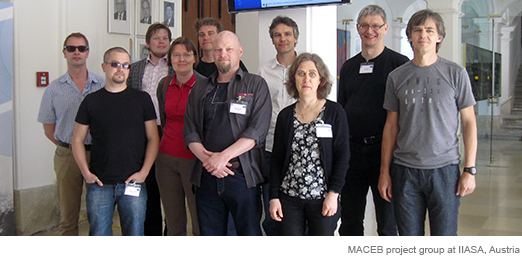

Background

Arctic temperatures have increased at almost twice the global average rate over the past 100 years. Warming in the arctic has been accompanied by an earlier onset of spring melt, lengthening of the melt season and changes in the mass balance of Greenland ice sheet (ACIA 2005, IPCC 2007). The lengthening of the melt season changes the Earth’s reflection coefficient , a positive feedback effect which leads to further warming.
Arctic warming is primarily a manifestation of global warming. Reductions in the atmospheric burden of carbon dioxide (CO2) are the backbone of any meaningful effort to mitigate climate forcing. But even if swift and deep reductions were made, the reductions may not delay the rapid melting of the Arctic. This is because the long life time of CO2 in the atmosphere.
Reductions in the concentration levels of short-lived climate forcing agents, such as black carbon, might be used to slow down the warming of the Arctic environment, to constrain the length of the melting season and thereby to reduce the feedback effects. These short-lived species have the advantage that emission reduction will quickly affect radiative balance of the atmosphere as opposed to reduction of long-lived greenhouse gases. By such reductions, one may potentially buy time for the Arctic environment until CO2 reduction efforts will decrease its atmospheric concentration.
Several studies have been made to link emissions from different areas and abundance of black carbon in the Arctic areas (e.g., AMAP 2011). Europe was found to be a significant source to surface concentration of black carbon whereas East Asia dominated the sources at higher troposphere.
There are still large uncertainties associated with modelling the forcing and temperature response due to black carbon (Bond et al. 2013). This prevents us from providing definitive answers regarding impacts and mitigation strategies. The aim of the MACEB project was to develop and demonstrate tools to estimate black carbon concentrations and corresponding radiative forcing over the Arctic areas and link them with the emissions from various areas and sources. This toolbox was used to analyze different mitigation strategies and find out the relative contribution of different areas at different scales (Europe, Finland) to the Arctic warming by black carbon.
Related information
